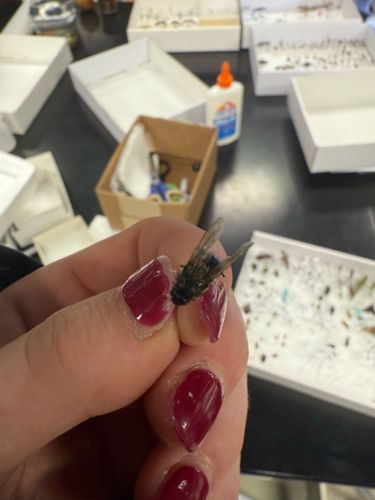Blow Fly (or possibly a similar large fly species)
Scientific Name: Calliphoridae (Family, specific genus/species difficult to determine from image)
Order & Family: Order: Diptera, Family: Calliphoridae
Size: Typically 4-16 mm in length

Natural Habitat
Widely distributed globally, often found near decaying organic matter like carrion, feces, or garbage, as well as in human dwellings, farms, and natural environments.
Diet & Feeding
Adult blow flies feed on decaying organic matter, nectar, and sometimes sugary excretions. Larvae (maggots) are scavengers, feeding primarily on carrion and necrotic tissue.
Behavior Patterns
Adults are strong fliers and are attracted to odors from decaying organic material for feeding and oviposition (egg-laying). Females lay eggs in clusters on carrion or other suitable substrates. The larvae develop rapidly, going through several instars before pupating. Some species are known for 'myiasis' where larvae infest living tissue.
Risks & Benefits
Risks: Can be vectors for disease-causing pathogens (e.g., bacteria, viruses) as they move between decaying matter and human food. Some species cause myiasis in animals and humans. Benefits: Play a crucial role in decomposition and nutrient cycling by breaking down carrion. Used in forensic entomology to estimate time of death. Larvae of some species (medical maggots) are used in maggot therapy for wound debridement due to their ability to consume necrotic tissue and release antimicrobial compounds.
Identified on: 11/20/2025